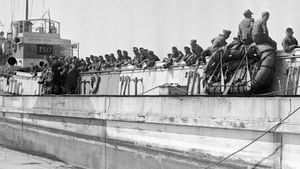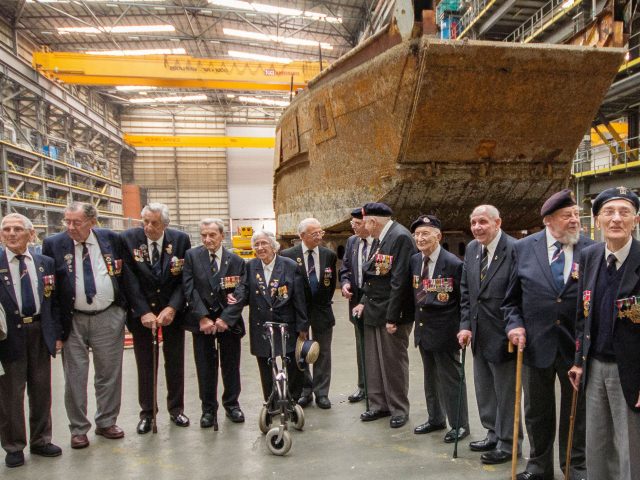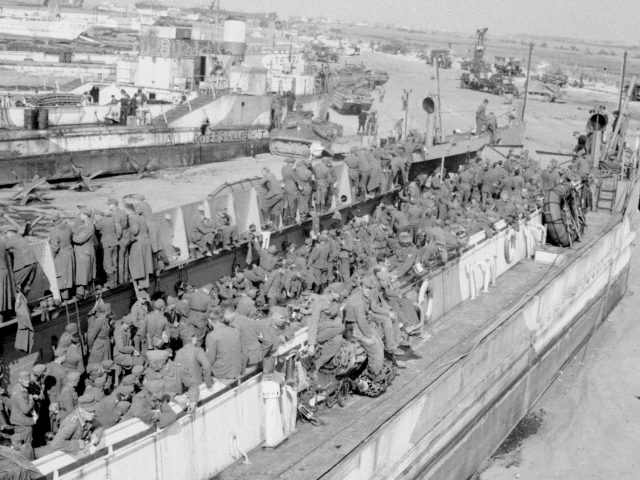D-Day’s last landing craft tank to be restored using £4.7m of lottery money
The restoration is timed to coincide with the 75th anniversary of the D-Day landings in two years’ time.

A sole surviving D-Day landing craft is to be restored with the help of £4.7 million lottery funding, it has been announced.
The landing craft tank LCT 7074 took part in Operation Neptune, the naval element of the Allied invasion of northern France in 1944, a vast undertaking that involved 7,000 ships and craft to land 160,000 soldiers on to the beaches of Normandy.
Now the “exceptional survivor” will be restored to its original appearance with the multimillion- pound investment from the National Lottery, timed to coincide with the 75th anniversary of the D-Day landings in two years’ time.

It will go on display as the focal point of Portsmouth’s D-Day Museum, an affiliate of the National Museum of the Royal Navy, which is due to reopen in 2018 following a complete refurbishment and will tell the in-depth story of events of June 1944.
Sir Peter Luff, chairman of the Heritage Lottery Fund, said: “The importance of the Normandy landings is very well understood, but as the years pass it becomes harder for people to appreciate just how much technological innovation they demanded.
“Without the development of the Landing Craft Tank earlier in the Second World War, it is difficult to see how D-Day – a hugely ambitious amphibious operation – could have succeeded.
“Now, once LCT 7074 has been restored to her original appearance, thanks to the National Lottery, the stories of those she carried on Operation Neptune can be brought vividly to life.”

Nick Hewitt, from the National Museum of the Royal Navy, said the National Lottery funding secured “a sustainable future for this exceptional survivor”.
“It puts her D-Day story – which uniquely links sea and land – in context for museum visitors and ensures she survives for future generations,” he added.
The landing craft tank, the only one to survive from D-Day and just one of 10 remaining vessels from the wider fleet, was one of 800 which had the capacity to carry 10 tanks or armoured vehicles and their crews.
Near midnight on June 6 1944, as part of Operation Overlord – the codename for the Allied invasion – LCT 7074 would have arrived at Gold Beach, one of the five beaches designated for the invasion, with one Cromwell tank, two Sherman tanks and seven Stuart tanks and their crews on board.
The landing craft tank was decommissioned in 1948 and later converted to a floating clubhouse and nightclub in Liverpool, before falling into a semi-submerged and deteriorating state and eventually being salvaged in 2014.
As part of the restoration, LCT 7074 will be taken apart and reassembled so it can be properly catalogued, and conservation work will be undertaken on its hull, superstructure and interior spaces.
The D-Day Museum’s two tanks will also be conserved and go on display on the landing craft’s tank deck.
As part of the project, Portsmouth City Council and the National Museum of the Royal Navy are also working to record oral histories of veterans who took part in D-Day.
Along with the vessel, the D-Day Museum will display a transcript of the diary of Sub-Lieutenant John Baggott, the 20-year-old trainee who commanded the 7074, as well as narratives and photos of other veterans from the operation.





